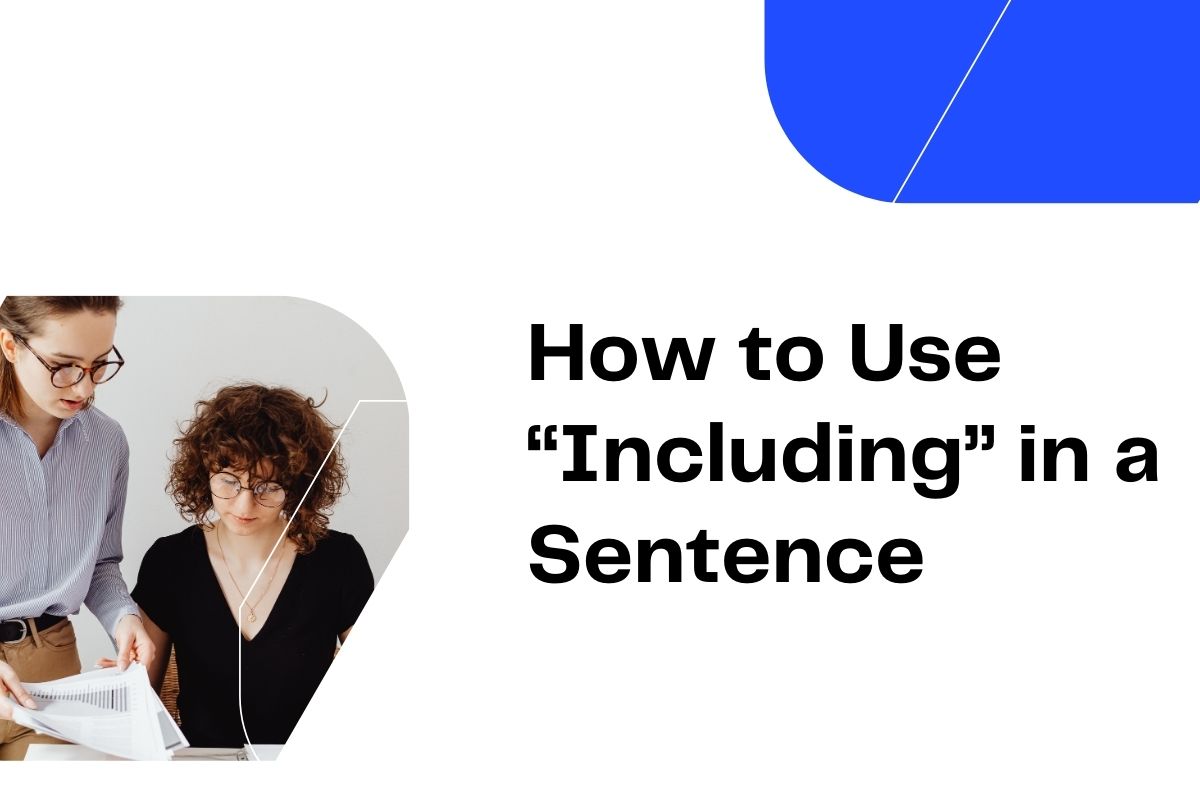In the English language, some words appear simple but can be difficult to use correctly. One of those words is “including.” It shows up in everyday conversations, writing assignments, business emails, and even academic texts. Many people believe they know how to use it, but they often make small mistakes. This article will guide you on how to use including in a sentence correctly and confidently. Whether you are a student, writer, or professional, understanding this word will improve your communication.
Here’s a quick overview of what makes “including” important:
Key Point 1: “Including” is used to introduce examples or parts of a group.
Key Point 2: It doesn’t mean the list is complete.
Key Point 3: You can place it at the beginning, middle, or end of a sentence.
Let’s now explore this word in detail, with examples and comparisons.
What Does “Including” Actually Mean?
To understand how to use including in a sentence, we first need to know what it really means. “Including” is a preposition. It means that the things mentioned are part of a bigger group. For example: “She packed several things, including a camera and sunglasses.” In this sentence, we know she packed more items, but only two were listed.
So, the word “including” gives examples but does not list everything. This is different from phrases like “consists of” or “composed of,” which usually mean a full list.
Here is another example: “He enjoys many sports, including football and basketball.” This means he also enjoys other sports not listed. So, it opens the door for more options.
Reminder: Always remember, “including” introduces examples but does not close the list.
Note: Do not use “including” when your list is complete—use “comprising” or “consisting of” instead.
Using it properly will make your writing sound more natural and professional.
Where Can You Use “Including” in a Sentence?
When learning how to use including in a sentence, knowing where to place it matters. It can appear at the beginning, middle, or end of a sentence. Let’s go through each position with examples.
Beginning:
“Including fresh fruit in your meals helps you stay healthy.”
Middle:
“The salad, including lettuce and tomatoes, was very fresh.”
End:
“He visited many countries during his trip, including Japan and Australia.”
Each placement is grammatically correct. But make sure the sentence flows naturally.
Here’s a comparison chart to better understand the placements:
| Position | Example | Emphasis |
|---|---|---|
| Beginning | Including exercise in your day is important. | Focus on the action or item being included |
| Middle | The plan, including budget and timeline, was approved. | Adds extra detail to the subject |
| End | We saw many animals, including lions and zebras. | Adds information after the main idea |
Use commas around the phrase if the information is extra. If it is essential to the meaning, you may not need commas.
How Is “Including” Different from Other Similar Words?
You might think “including” is the same as words like “such as,” “consisting of,” or “composed of.” But they have different meanings. Learning how to use including in a sentence also means understanding what not to confuse it with.
Here is a comparison chart:
| Word or Phrase | Meaning | Example |
|---|---|---|
| Including | Shows part of a group | I packed items, including books and clothes. |
| Such as | Gives examples | She enjoys hobbies such as painting and gardening. |
| Consisting of | Full list | The team is consisting of five players. |
Let’s explain further:
- Including means giving a few examples out of a bigger list.
- Such as is almost the same but is used when showing similar items.
- Consisting of or composed of refers to a full, final list with nothing more added.
Reminder: Use “including” when you’re mentioning part of a group, not the entire list.
Can You Use “Including” in Formal Writing?
Absolutely. Many people wonder how to use including in a sentence when writing formal texts. The good news is, you can use it in business reports, academic papers, legal documents, and professional emails. Just make sure your grammar and punctuation are correct.
Examples:
- Academic: “The course covers various subjects, including mathematics, history, and science.”
- Business: “Our services, including 24/7 customer support, aim to improve user satisfaction.”
It’s essential to keep the sentence clean and not cluttered. Using too many items after “including” can make it harder to read. Always try to use just two or three examples.
Note: Never put a colon right after the word “including.” It’s incorrect.
Example (Wrong): “She enjoys many subjects, including: math, art, and music.”
Correct: “She enjoys many subjects, including math, art, and music.”
Always check the flow of your sentence to ensure that it reads smoothly.
What Are Common Mistakes When Using “Including”?
When learning how to use including in a sentence, it’s important to avoid common errors. Many people misuse the word because they misunderstand its function.
Mistake 1: Using it for a complete list
Incorrect: “The box contains items, including only pencils and pens.”
Better: “The box consists of pencils and pens.”
Mistake 2: Missing a subject or unclear sentence
Incorrect: “Including several tools, very useful for home repairs.”
Correct: “The toolbox, including several tools, is very useful for home repairs.”
Mistake 3: Incorrect punctuation
Incorrect: “She packed shoes, clothes, and snacks, including fruits.”
Correct: “She packed shoes, clothes, and snacks, including fruits.”
Also, don’t overuse “including” in the same piece of writing. It can make your text sound repetitive. Try to vary your language when possible. Education with Innovation
Conclusion
Now that you’ve learned how to use including in a sentence, you’ll notice how often this little word appears. It may seem small, but it has big importance in both casual and formal communication. Using it correctly improves your writing, shows your command of English, and helps avoid confusion.
You now know that:
- “Including” introduces examples.
- It doesn’t mean a full list.
- It can appear anywhere in a sentence.
By practicing with your own examples and reviewing sentences, you can become more confident in your writing.
Reminder: Using “including” adds value to your sentence, but don’t forget that clarity is the goal.
FAQ’s
1. Can you start a sentence with “including”?
Yes. Just make sure the sentence is complete and grammatically correct.
2. Is “including” formal enough for professional writing?
Yes. It’s commonly used in business, academic, and legal documents.
3. What punctuation should come before “including”?
Usually a comma, unless the list is essential to the sentence.
4. Does “including” imply a full or partial list?
It implies a partial list. There could be more items not mentioned.
5. Can “including” be used with examples like “such as”?
Yes, but don’t use them together. Choose one or the other based on sentence flow.




